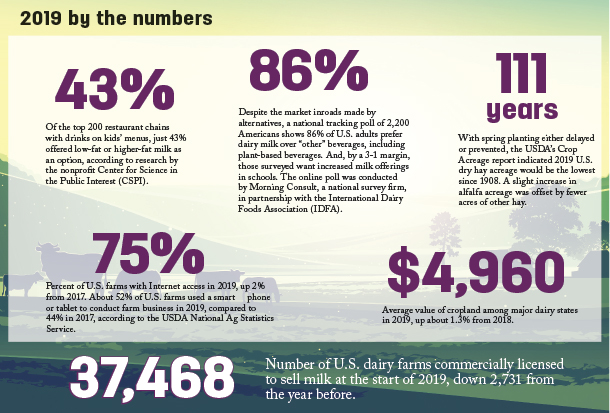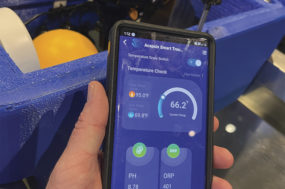The $16 billion, three-pronged federal package was designed to offset the negative financial impacts suffered by U.S. farmers who faced weaker export markets. Of that total, $14.5 billion was designated for direct payments to specialty and non-specialty crop producers, dairy and hog farmers under the Market Facilitation Program (MFP).
For dairy farmers, total MFP payments were set at 20 cents per cwt on their established annual milk production history. The initial payment, scheduled for August, paid 10 cents per cwt; if warranted, second and third payments of 5 cents per cwt were to be paid in November 2019 and January 2020, respectively. To be eligible for the dairy payment, producers must have been operating on June 1, 2019.
On the crop side, there was changes from the 2018 program. The USDA expanded payment-eligible crops. In addition to corn and soybeans, the list of non-specialty crops eligible for 2019 MFP payments included alfalfa hay, triticale and 23 others. Another change was payments for MFP-eligible crops were not based on flat payments for each crop but rather on an acreage rate calculated for each individual county, regardless of the crop planted.
In recent years, U.S. hay producers annually export about 2.5 million metric tons of alfalfa hay and about 1.5 million metric tons of “other” hay. China – the epicenter for U.S. trade disputes – has become the leading export market for U.S. alfalfa hay.
With many dairy farmers also growing alfalfa, the assumption was they’d be eligible for payments on their alfalfa forage acreage. However, when farmers began applying for MFP payments based on their alfalfa acreage, some were denied payments on alfalfa-mix forage acreage by state USDA Farm Service Agency (FSA) officials.
In comments released in October, USDA clarified MFP eligibility levels for forage crops. Because alfalfa-mixture crops are generally fed to livestock in the U.S. and not exported, they were deemed ineligible for the 2019 MFP payments.
Under a second piece of the TMP initiative, the USDA’s Ag Marketing Service (AMS) was directed to purchase $1.4 billion in commodities through the Food Purchase and Distribution Program. Of that total, about $68 million was designated for dairy products, with about $151 million directed toward beef products. Products were to be purchased in four phases, starting after Oct. 1, 2019, with deliveries beginning in January 2020.
The products will be distributed to states for use in the network of food banks and food pantries that participate in The Emergency Feeding Assistance Program (TEFAP), elderly feeding programs such as the Commodity Supplemental Foods Program (CSFP), and tribes that operate the Food Distribution Program on Indian Reservations (FDPIR). These outlets are in addition to child nutrition programs, such as the National School Lunch Program, which may also benefit from these purchases.
Under a final piece of the program, the U.S. Dairy Export Council (USDEC) received another $2.5 million to help develop new export markets. USDEC was one of about 50 organizations receiving a total of $100 million under the Agricultural Trade Promotion (ATP) program. ![]()

-
Dave Natzke
- Editor
- Progressive Dairy
- Email Dave Natzke







